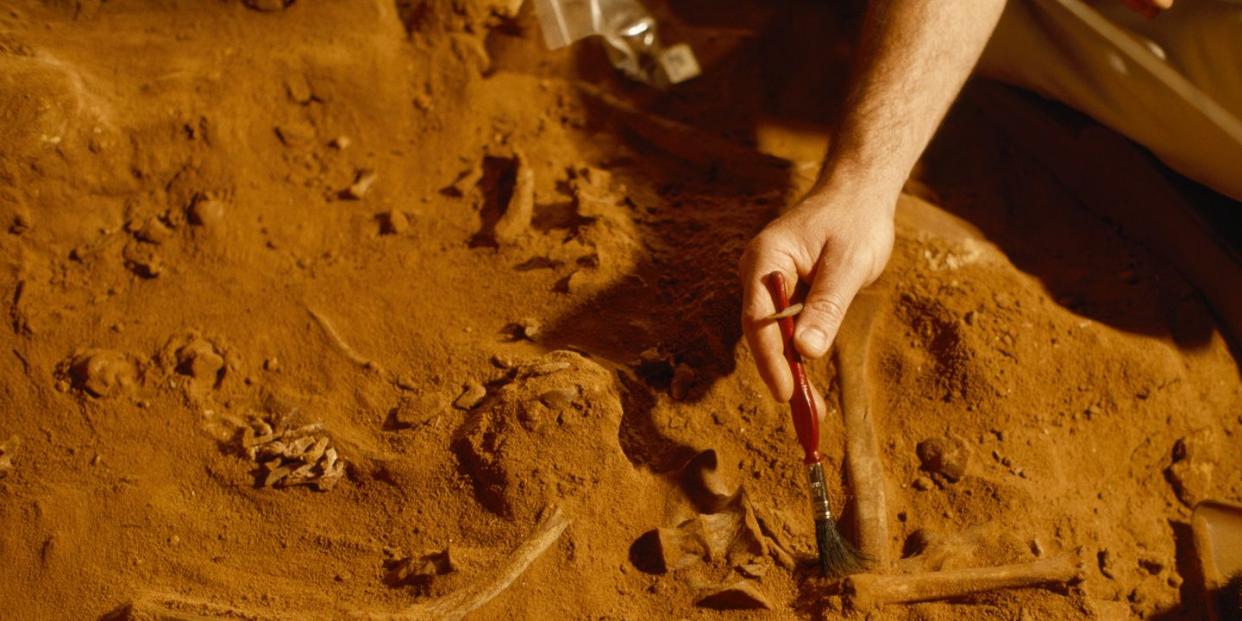Archaeologists Found Ancient Human Fossils That Rewrite the History of Migration

"Hearst Magazines and Yahoo may earn commission or revenue on some items through these links."
New research shows that Homo sapiens traveled from Africa to East Asia and toward Australia up to 86,000 years ago.
The discovery also suggests that modern humans have lived in the region for at least 56,000 years.
This route of human expansion seems to have occurred much earlier than previously believed.
Thanks to a new find tucked inside a cave in Laos, experts now believe that humans arrived in Australia much earlier than we ever thought.
Human fossil remains found in 23 feet of cave sediment in the Tam Pá Ling cave in Laos tie together humanity's trek from Africa into Southeast Asia and on to Australia, according to a new study published in Nature Communications. These were Australia's first people.
"Tam Pá Ling plays a key role in the story of modern human migration through Asia," Fabrice Demeter, University of Copenhagen paleoanthropologist and one of the paper's lead authors, says in a news release, "but its significance and value is only just being recognized."
The cave in question opens up dicey discussions. When a skull and jawbone were first found in the cave in 2009, it shattered the idea that humans only expanded via sea-going routes. The cave in question is 186 miles inland in northern Laos, opening up to many questions regarding timing and methods of human dispersal.
The human fossils found in the layers of sediment were originally difficult to date. Between Laotian laws protecting the remains and contaminating charcoal that had washed into the cave, several standard dating methods were eliminated. This required researchers to rely heavily on one technique—called luminescence dating—to craft a timeline.
"Without luminescence dating this vital evidence would still have no timeline and the site would be overlooked in the accepted path of dispersal through the region," Kira Westaway, Macquarie University geochronologist says in a news release. "Luckily the technique is versatile and can be adapted for different challenges."
Dating of the 2009 find suggested a minimum age of 46,000 years, but after additional excavations (which were delayed by three years thanks to the pandemic), new evidence in the form of seven pieces of human skeleton gave researchers more to work with. This pushed back the estimated age of the oldest pieces, extending it to between 68,000 and 86,000 years ago.
Using multiple dating methods for both the fossils and the sediment, the team says that they found "a consistent accumulation of sedimentary layers over a long period." And they claim it wasn't just a "rapid dump of sediment," showing that humans have lived in the region for more than 56,000 years. The deepest fossil, a fragment of leg bone, could be as old as 86,000 years—that sure changes the arrival time of humans in Southeast Asia.
"This really is the decisive paper for the Tam Pá Ling evidence," Westaway says. "Finally, we have enough dating evidence to confidently say when Homo sapiens first arrived in this area, how long they were there and what route they may have taken."
Features of the skull show off a different population than the more native hominins—and not a mixed population either—the find revealed how Homo sapiens likely moved through the area.
"We have much to learn," Westaway says, "from the caves and forests of Southeast Asia."
The newfound evidence lends credence to the idea that modern humans traveled through forested regions, mostly likely along river valleys, on their way from Africa to Asia and on to Australia.
You Might Also Like
